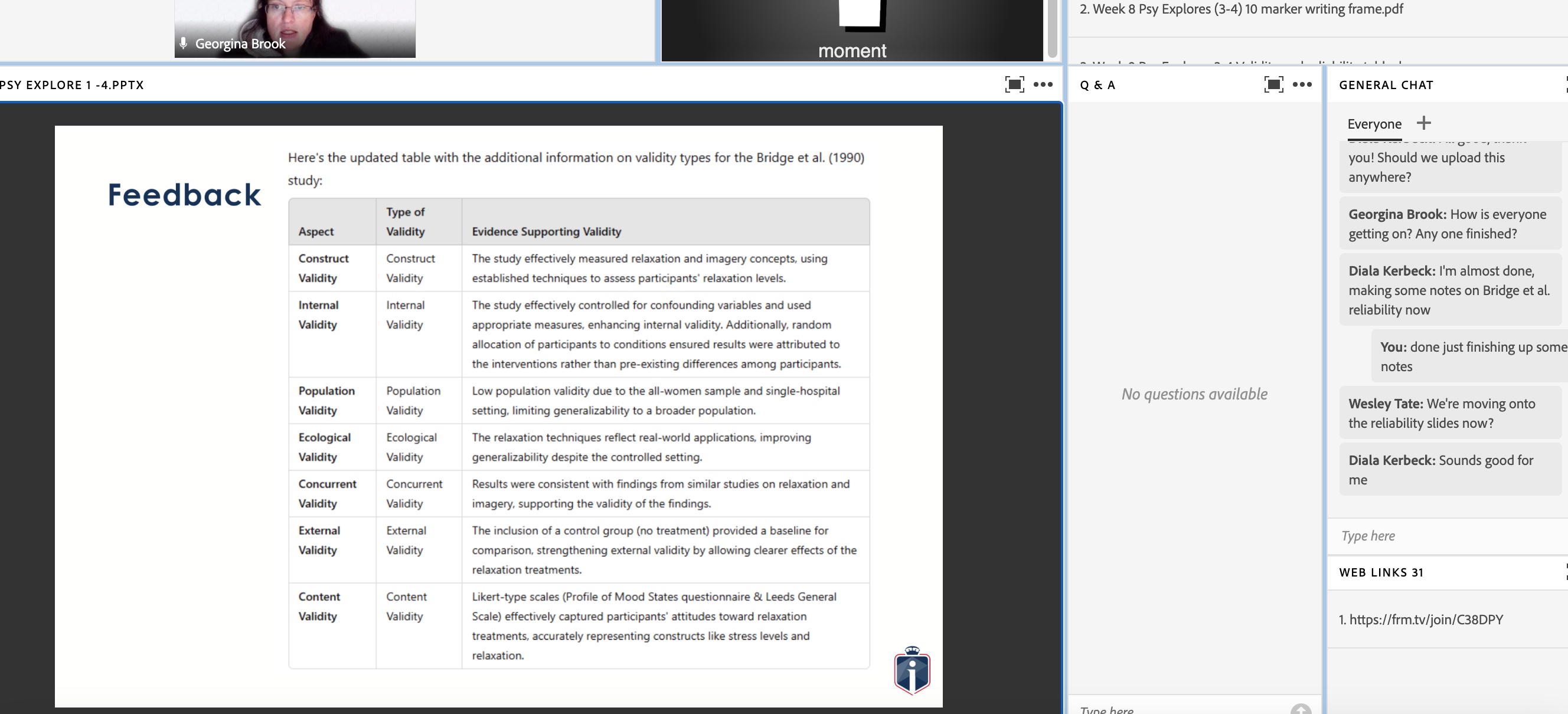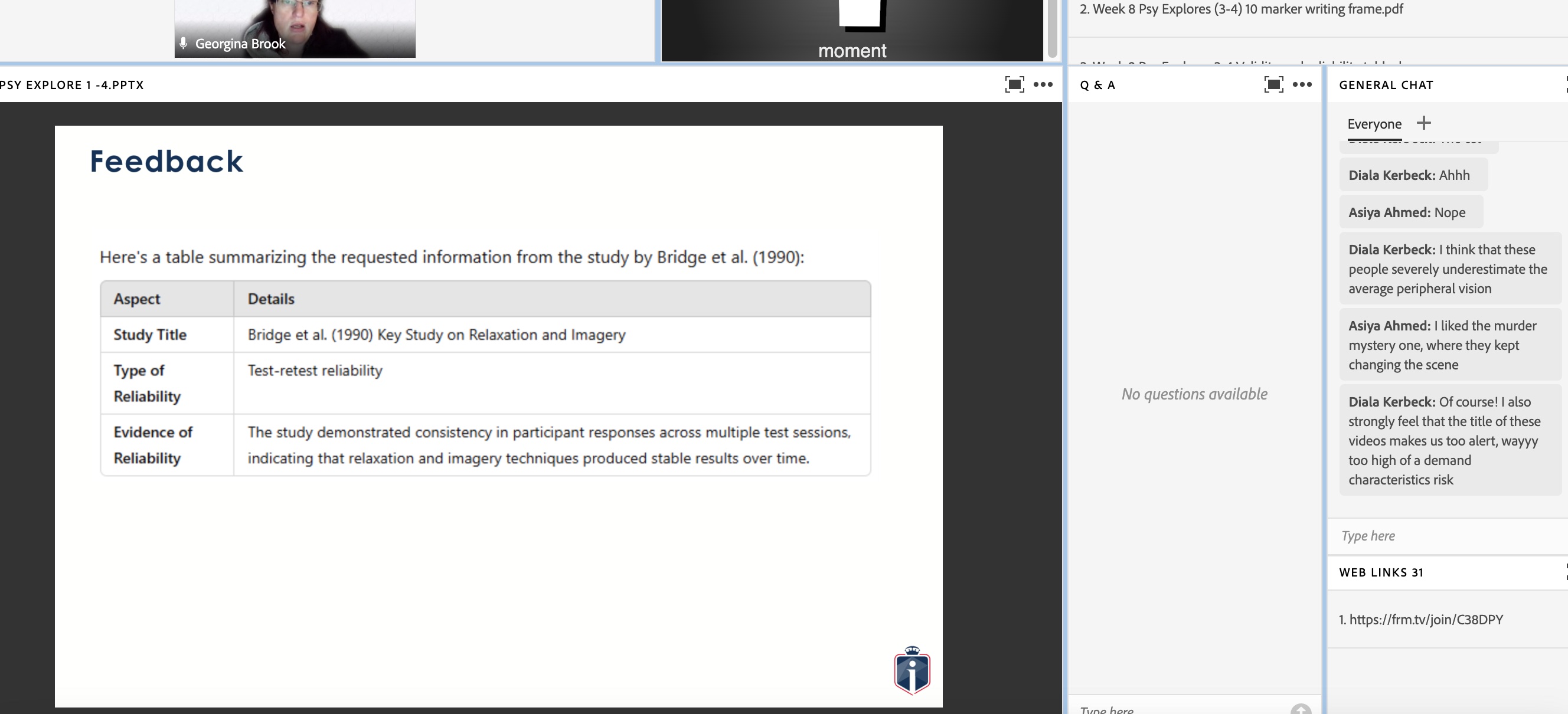Key Studies
Savage and Armstrong (1990)
Context
The study investigates the effectiveness of different consultation styles in healthcare, specifically comparing directive and sharing approaches regarding patient satisfaction.
Aim
To compare the effectiveness of directive versus sharing consultation styles on patient satisfaction.
Method
200 patients in London assessed satisfaction through questionnaires immediately after and one week post-consultation.
Procedure
After their consultations, patients were asked to complete satisfaction questionnaires. This assessment took place immediately following their consultation as well as one week later.
The questionnaires likely included various metrics to gauge patient satisfaction, focusing on aspects such as their feelings about the consultation style, perceived competence of the physician, and overall satisfaction with the care received.
Responses from the questionnaires were collected, analysed, and compared to derive conclusions about the effectiveness of each consultation style in relation to patient satisfaction.
A follow-up on patient satisfaction was conducted a week post-consultation to evaluate the lasting impact of the consultation style on their satisfaction level.
Results
Higher patient satisfaction was observed with directive consultations. Patients preferred authority in diagnosing simple physical ailments, with notable variations in chronic or psychological issues.
Conclusion
Generally, patients preferred directive consultations when it came to simple physical ailments, indicating that their perception of authority affects satisfaction differently in varied medical contexts.
Evaluation
Strengths:
Adequate sample size;
Random allocation reduces bias;
Use of a control group enhances validity.
Weaknesses:
Limited generalisability due to specific demographic;
Lack of qualitative data may overlook participants' personal experiences and potential for social desirability bias.
Debates: The findings may raise debates on the balance between patient autonomy and physician authority in treating patients, particularly concerning varying health issues.
Yokley and Glenwick
Context
Previous studies indicate that reminders can significantly increase immunization rates. For instance, Byrne et al. (1970) reported a 10% rise in immunizations with multiple reminders, while White (1976) showed that incentivized reminders from radio DJs achieved a 92.6% return rate on immunization slips.
Aim
The study aims to evaluate the effectiveness of four different conditions to motivate parents in ensuring their children receive vaccinations.
Procedure
Conducted as a longitudinal study with a sample of 2,101 preschoolers requiring vaccines.
The children were divided into various experimental groups (general prompt, specific prompt, increased access, monetary incentive) along with control groups.
The impact of these different approaches was assessed by analysing the immunisation rates across the groups.
Results
Monetary incentives had the highest impact on improving immunisation rates, achieving significant adherence to vaccination schedules.
The effectiveness of different conditions ranked as follows: monetary incentives > increased access > specific prompts.
Specific prompts emerged as the most cost-effective intervention, enhancing adherence without financial incentives.
Conclusion
Specific prompts are identified as the most cost-effective intervention for increasing immunisation rates among preschoolers.
Evaluation
Strengths:
The study provides valuable insights for health departments, demonstrating that specific prompts can significantly enhance adherence to vaccination schedules.
Weaknesses:
The issue of reductionism versus holism arises, suggesting that understanding adherence requires considering broader contextual factors beyond just individual rationality.
Debates:
The findings raise discussions on the implications for public health strategies, particularly in balancing cost-effectiveness with comprehensive approaches to improving health outcomes for children. The applicability of interventions like incentives also brings attention to the potential impact of enjoyment in the treatment process and the importance of psychological strategies in health-related interventions.
Brudvik et al (2016)
Context
Research indicates a lack of appropriate pain management for children in healthcare, especially in outpatient settings like emergency departments. This inadequacy can lead to short-term issues such as slower healing as well as long-term problems like anxiety and fear towards medical care.
Aim
The study aimed to investigate the agreement in pain assessment among children, parents, and physicians as well as how these assessments influenced the provision of pain relief.
Method
The study included 243 children aged 3–15 years visiting a Norwegian emergency department over 17 days. All participants—children, parents, and physicians—completed questionnaires regarding pain levels.
Procedure
Pain Assessment Tools: Children aged 3-8 used the Faces Pain Rating Scale, while those aged 9-15 used Visual Analogue Scale (VAS) and Coloured Analogue Scale (CAS). Parents and physicians used the Numeric Rating Scale (NRS).
Data Collection: Scores were gathered under conditions of confidentiality where parents and children were instructed not to reveal their ratings to the physician.
Results
Physicians significantly underestimated children's pain, with their assessments averaging 2.3 lower than children's and 1.6 lower than parents'. Only 8.6% of children received painkillers, with under-treatment especially prominent in cases of severe pain as assessed by the child.
There were low levels of agreement in pain assessments between parents and physicians (15%) and between children and physicians (14.6%), while agreement between parents and children was higher at 40.1%.
Conclusion
The findings suggest physicians may underestimate pain levels reported by both children and their parents. This emphasises the need for doctors to consider parental input when assessing pain in children, aiding in providing more accurate pain management.
Evaluation
Strengths:
High ecological validity due to real-life setting and a large sample size.
Findings could enhance pain assessment practices.
Weaknesses:
Use of self-report measures may not accurately represent true feelings, potentially influenced by participants' awareness of being part of a study.
Debates
The study raises discussions on the complexities of assessing pain in children, highlighting the necessity of individual versus broader contextual factors in treatment, as well as the potential implications for fostering better communication and understanding in pediatric pain management.
Bridge et al. (1998)
Context
Addressing the stress caused by cancer treatment to improve patient outcomes (Maguire, 1981; Simonton, 1975).
Aim
To determine the effectiveness of relaxation and imagery on stress management in cancer patients.
Sample
139 women under 70 undergoing radiotherapy for breast cancer in a London hospital.
Randomly assigned to three groups: control (no treatment), relaxation, relaxation plus imagery.
Procedure
Participants are randomly selected and asked to consent to the study. They were told that this would not affect their treatment.
Their mood was assessed through a questionnaire at the beginning and and after the six-week programme.
Mood was assessed using the Profile of Mood States (POMS) and Leeds General Scales (LGS).
Control Group: This group received no treatment. They were encouraged to talk about themselves and their interests.
Relaxation Group: Engaged in relaxation techniques including sensory awareness and deep breathing. They were provided with 15 minutes practice tapes that guided them in relaxation exercises. They met with the researcher once a week for half an hour.
Relaxation Plus Imagery Group: Participants practiced relaxation and visualisation strategies–imagining a peaceful scene to enhance relaxation.
Results
Significant mood improvement in relaxation groups, especially those using both relaxation and imagery.
The control group experienced a worsening of mood.
More pronounced effects in women aged 55 and older.
Conclusion
Relaxation combined with imagery is effective at improving mood and managing stress in cancer patients.
Significant mood improvement was observed particularly in the groups practicing both relaxation and imagery, highlighting the effectiveness of this combined approach.
The study found that the most pronounced effects were seen in women aged 55 and older, suggesting that age may be a factor in the effectiveness of relaxation techniques.Evaluation
Evaluation
Strengths
Adequate sample size; random allocation reduces bias.
Use of a control group enhances validity.
Weaknesses
Limited generalizability due to specific demographic.
Lack of qualitative data may overlook participants' personal experiences; potential for social desirability bias.

